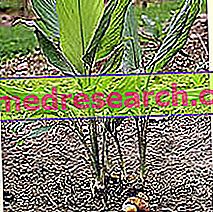Cell movement
The ability of cells to move in a liquid or aeriform environment occurs through direct or indirect movement. The indirect movement is entirely passive, by means of the wind (it is the case of pollen), by means of water, or with the circulatory stream. A special type of indirect motion is the Brownian movement, which is performed with the collision of cells with colloidal molecules contained in a medium; this type of movement is very irregular (zigzag). The direct movement is characteristic of certain cells which, in order to carry it out, must have certain peculiarities: amoeboid cells, hair cells, muscle cells.
The motion of amoeboid cells is characterized by the emission of offshoots of cellular substance (pseudopodia). These offshoots can be emitted at any point on the cell wall, but when they are everted in a certain direction and always in that one, they allow small displacements of the cell. With this mechanism the leukocytes, the migrating cells of the connective tissue, the histiocytes and the monocytes move. The speed of movement is not more than a few microns per minute. The hair cells and flagellates are instead able to perform the so-called vibratile movement, by means of filament organelles stably implanted in the cells, called flagella and cilia. The flagella are a classifying element of an entire class of Protozoa called flagellate: in humans they are found only in the spermatozoon; the eyelashes are instead much more frequent in the cells, both of the animal and vegetable kingdom: in humans they are found on the free part of cells covering the respiratory tract, the uterus, the tuba, the efferent ducts of the testicle. Each eyelash has a small body on the cytoplasm where it is fixed, called the basal corpuscle.
The filaments perform two types of movement: a rotary, for which the flagellum is screwed on itself, and an oscillatory one, similar to that of a fish's tail; the result of these movements can be either a propulsion of the cell, or a retraction.
The last type of movement to which the cells are subject is muscle movement: only smooth and striated muscle cells are subject to this motion and consists in the contraction of particular differentiated elements contained within the cell called myofibrils. The contraction of the myofibrils, and consequently of the whole muscle cell, is never spontaneous but always occurs following an excitement due to nerve impulses.
Cellular adaptability
This term means the ability of a cell to be able to react to stimuli from the external environment and to be able to adapt to it in order to achieve the best vital conditions. Stimuli can be of various kinds and not necessarily harmful to cellular life; depending, in fact, on the harmfulness or otherwise of the stimulus, the cell responds with a movement that can be of orientation (tropism) or distancing (taxi). Both the tropism and the rate can be negative if the cell moves away refusing the stimulus, or positive if the element approaches the source of the stimulus. A particular mention deserves the chemotaxis, that is the cellular movement towards a determined chemical substance that is in greater useful concentration (positive chemotaxis) or the removal from it (negative chemotaxis).
Cellular reproduction
Cell division is an essential process for the continuation of the species: in fact in all living beings, both animals and plants, cells cannot originate except by the division of previous mother cells. For the individual already conceived cell division leads to its morphogenesis, which means that on the fertilized egg all the embryonic sketches that will give rise to the individual organs are built: it is the means of its growth through which an individual infant of small size comes to the mature individual. Finally, cell division is the only means available to the living being for the repair of losses due to physiological reasons or due to trauma. There are two methods of cellular reproduction: direct division or amitosis and indirect division or mitosis or karyokinesis.
Edited by: Lorenzo Boscariol



